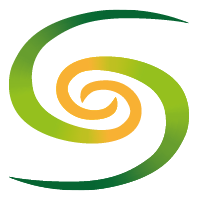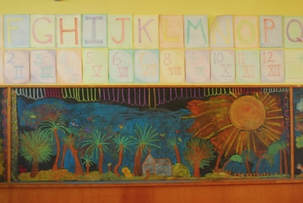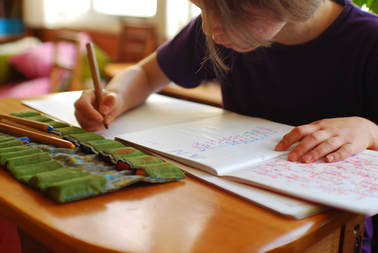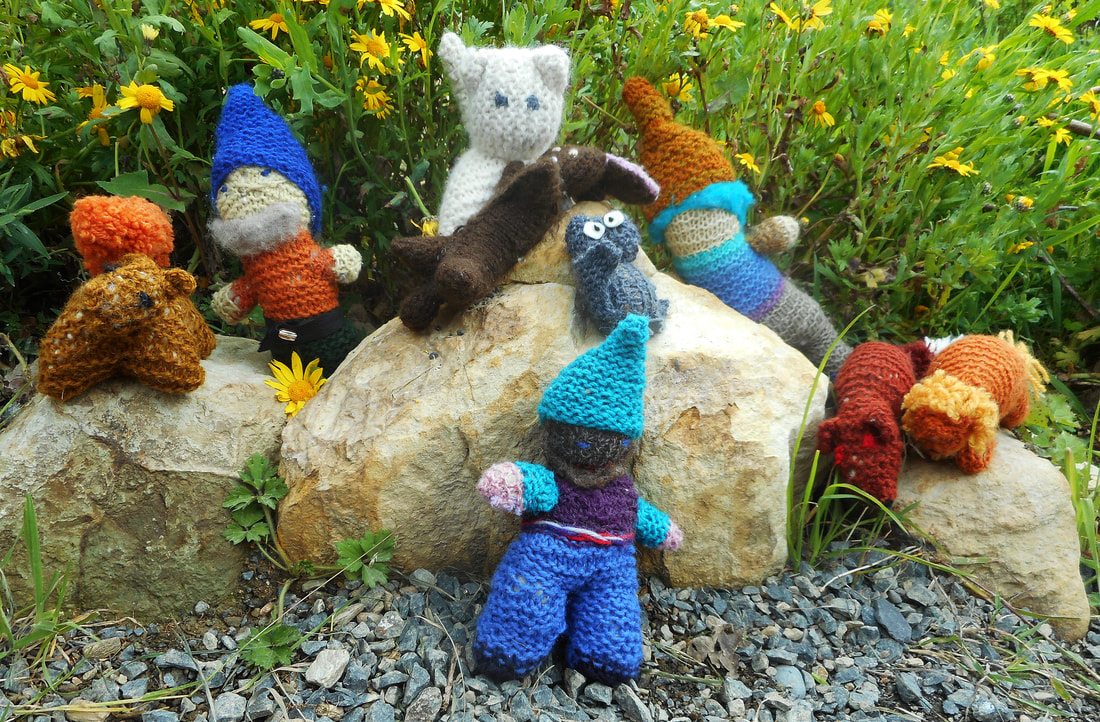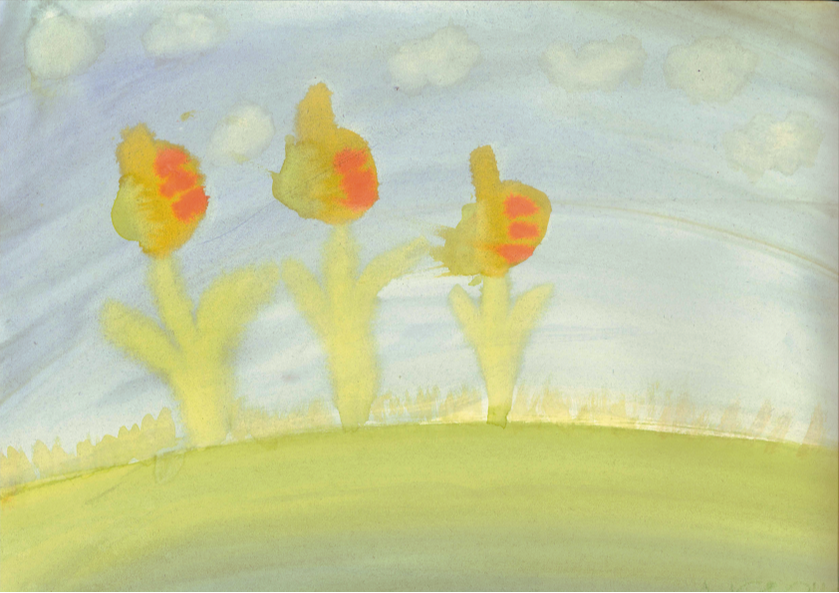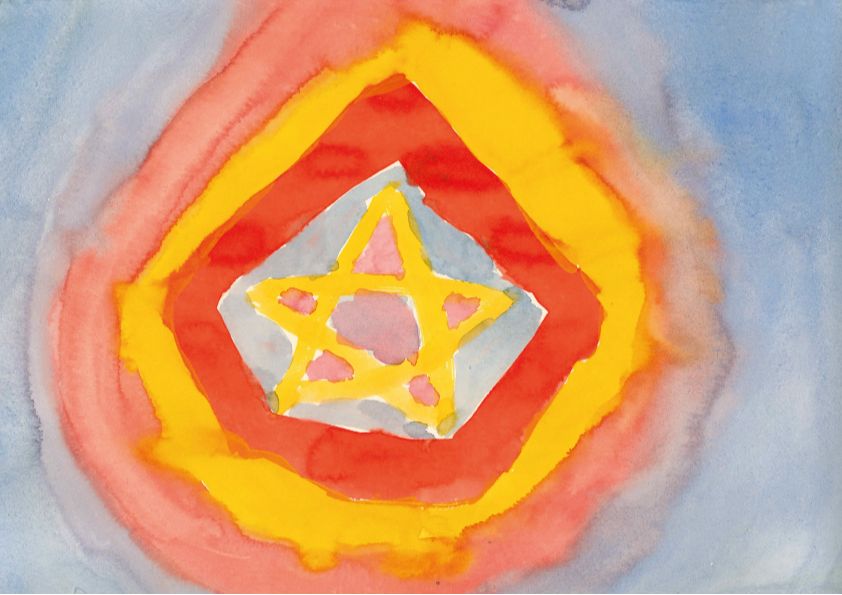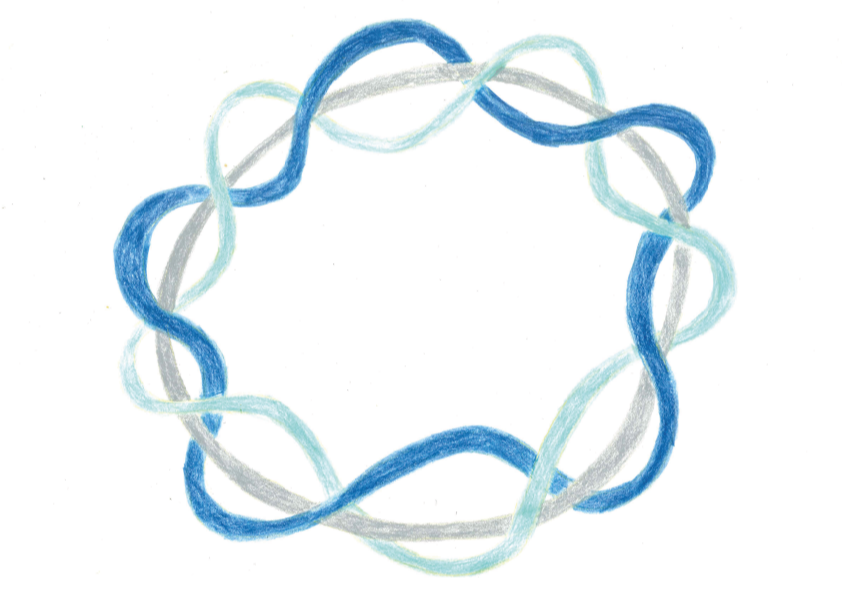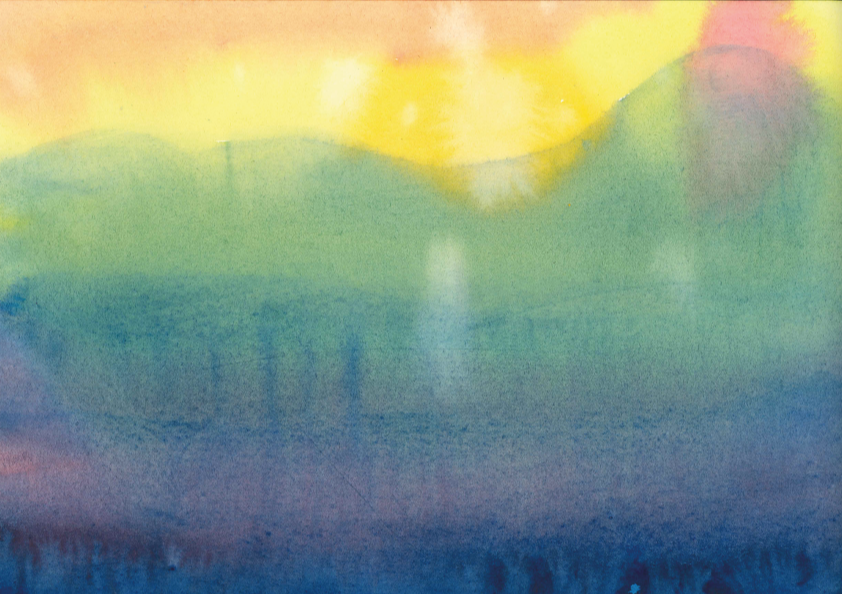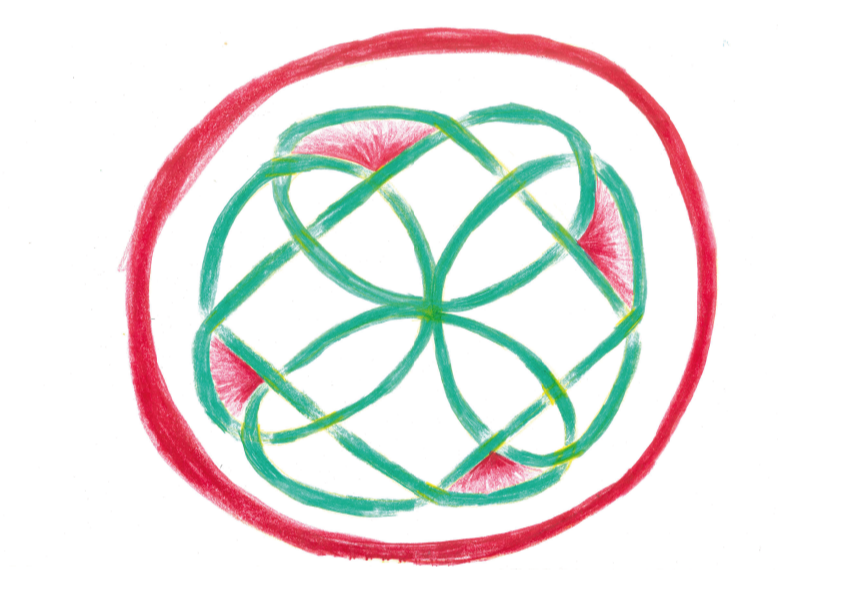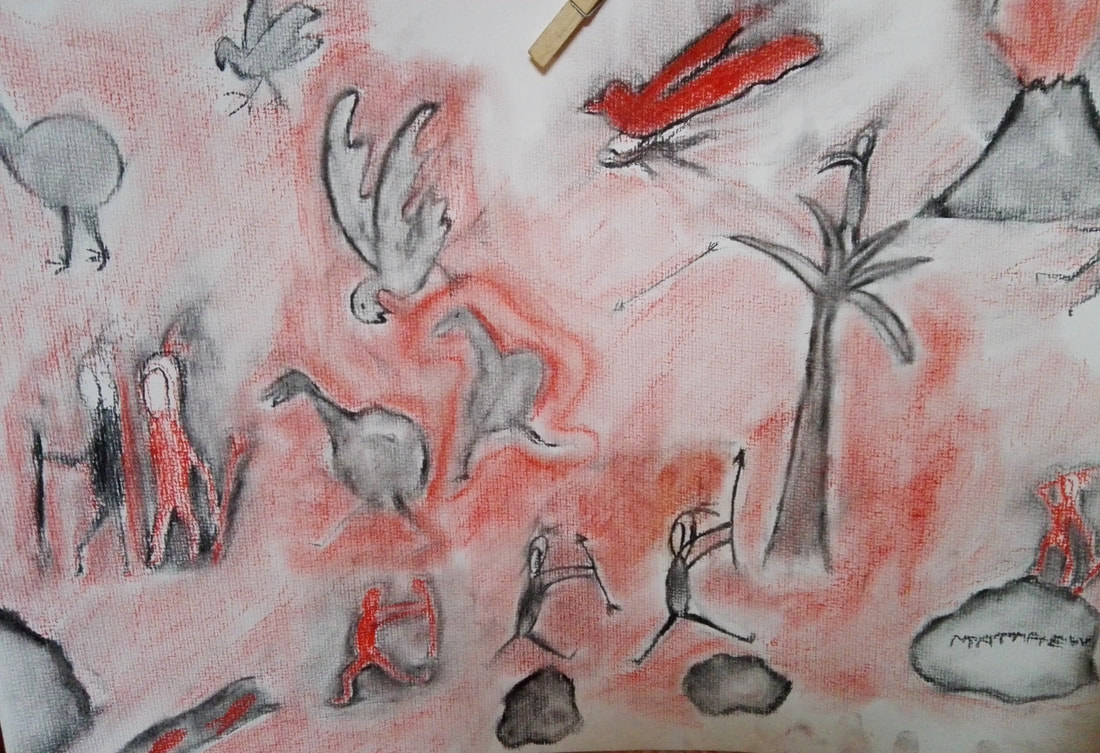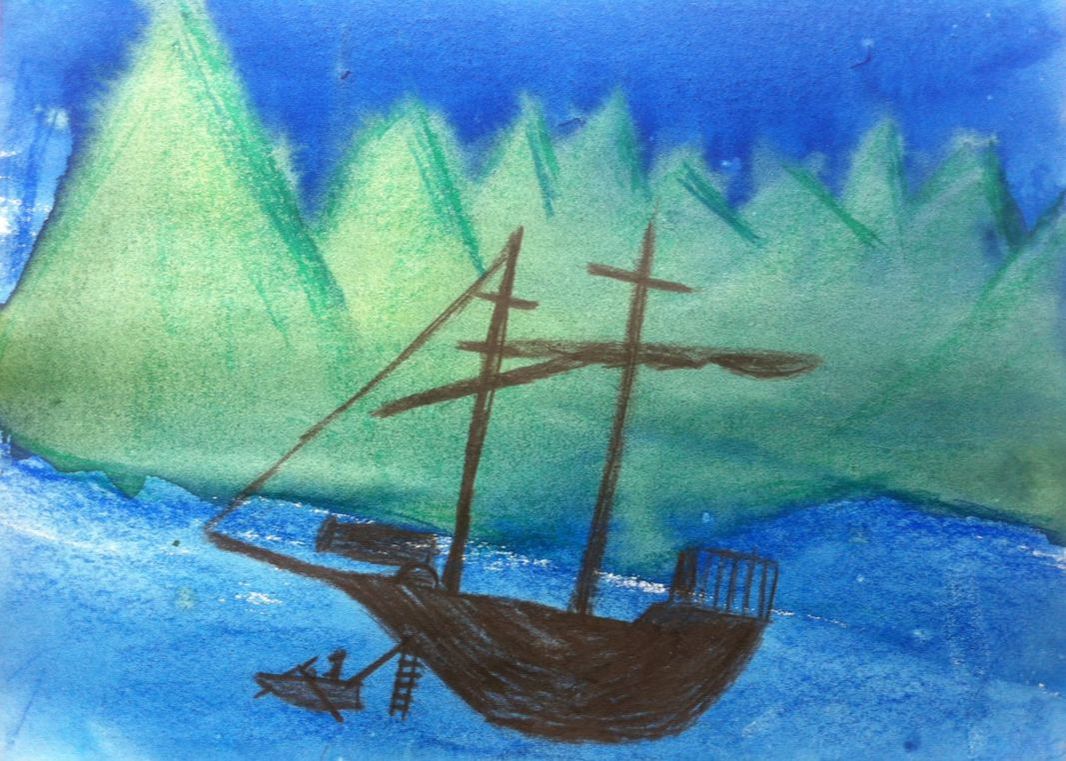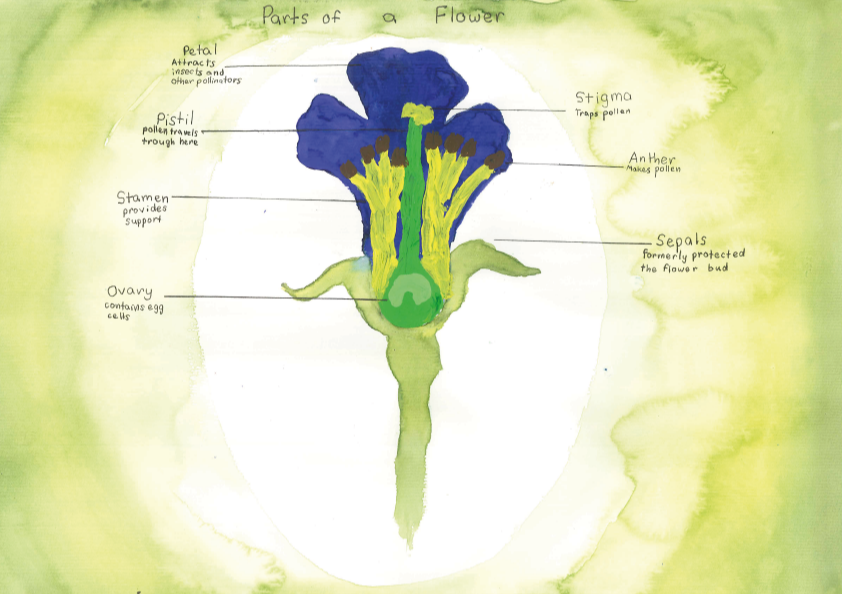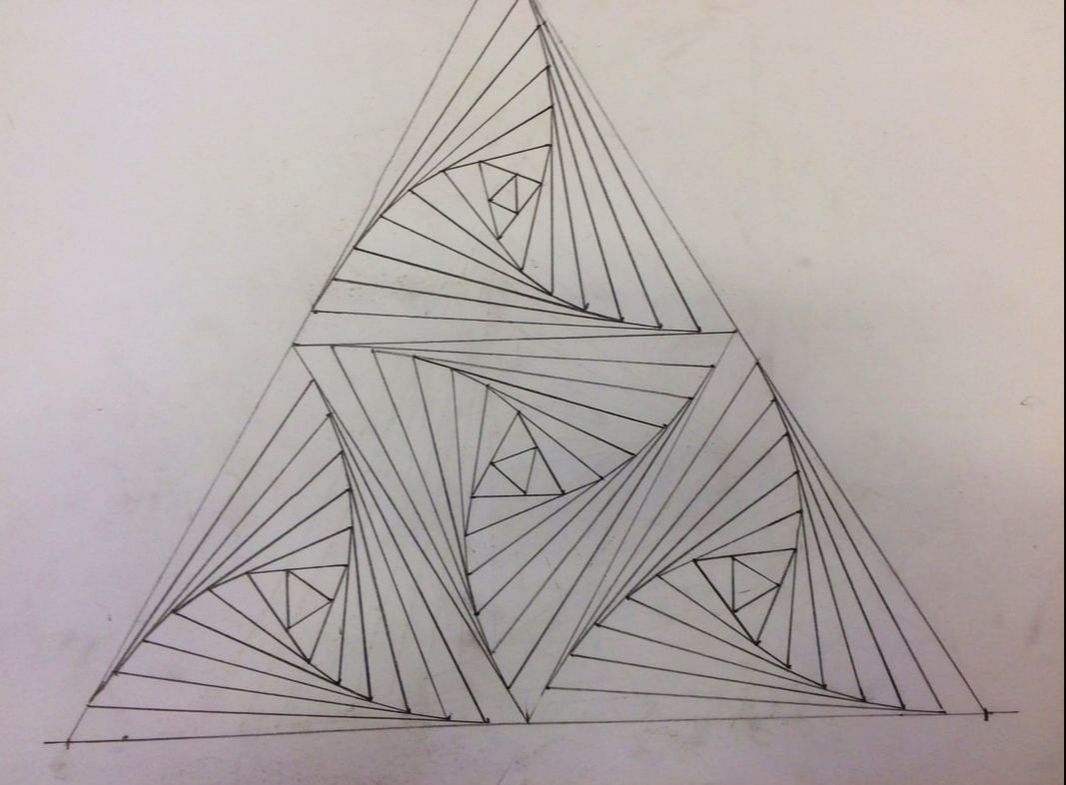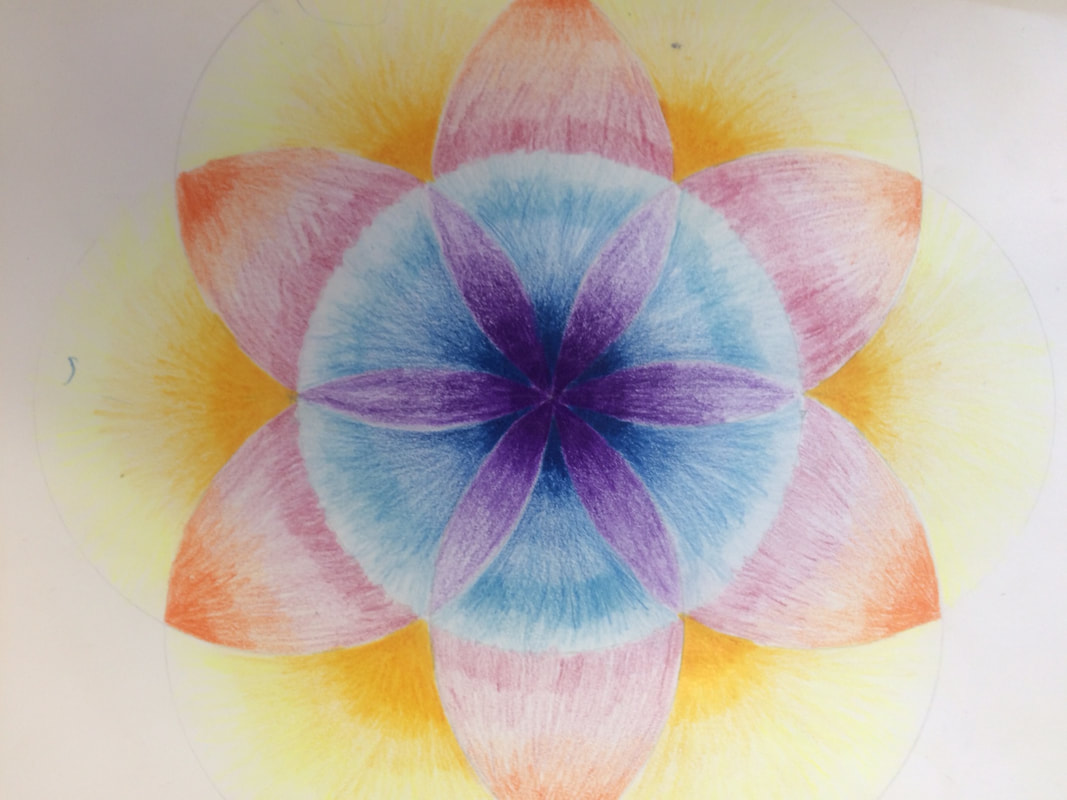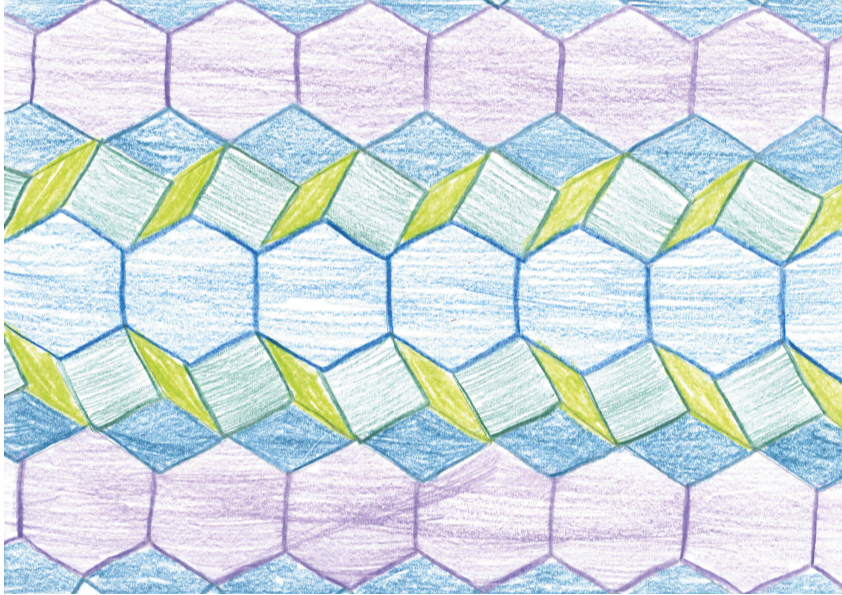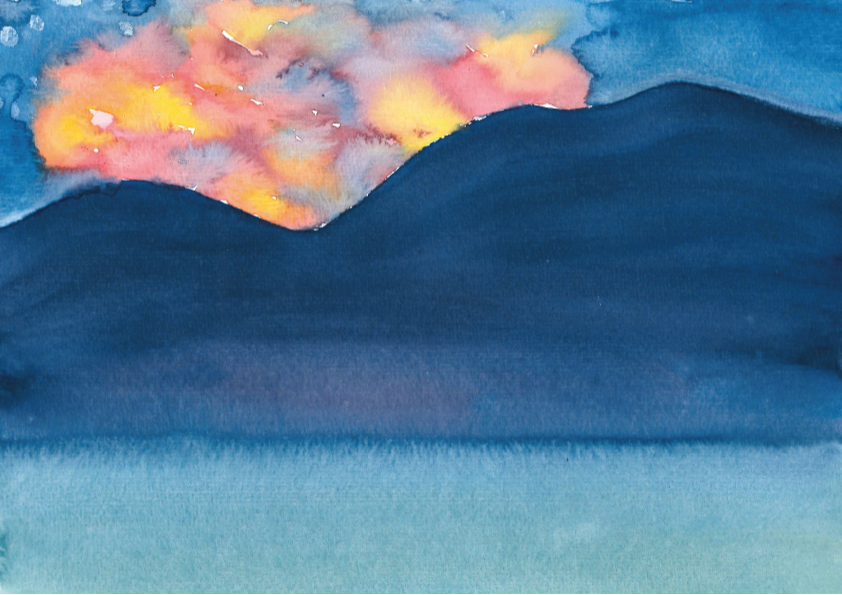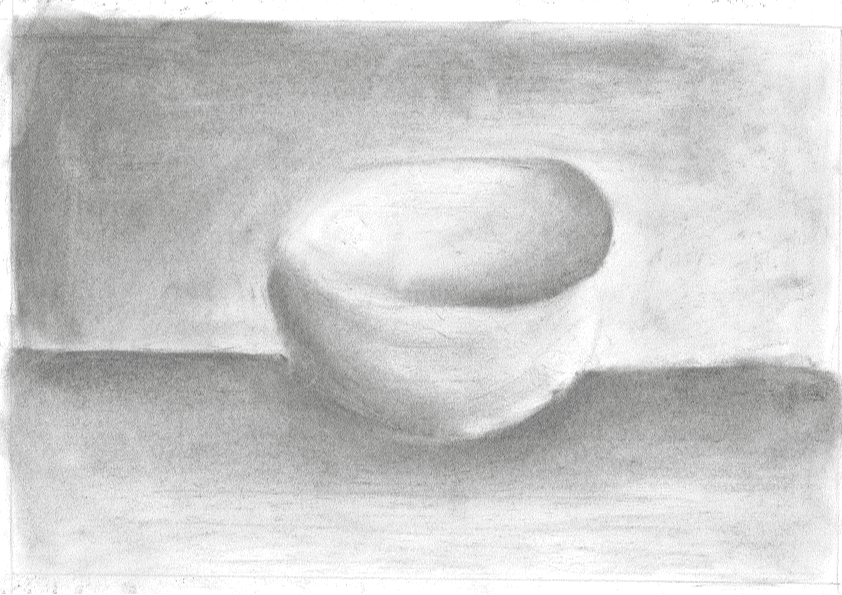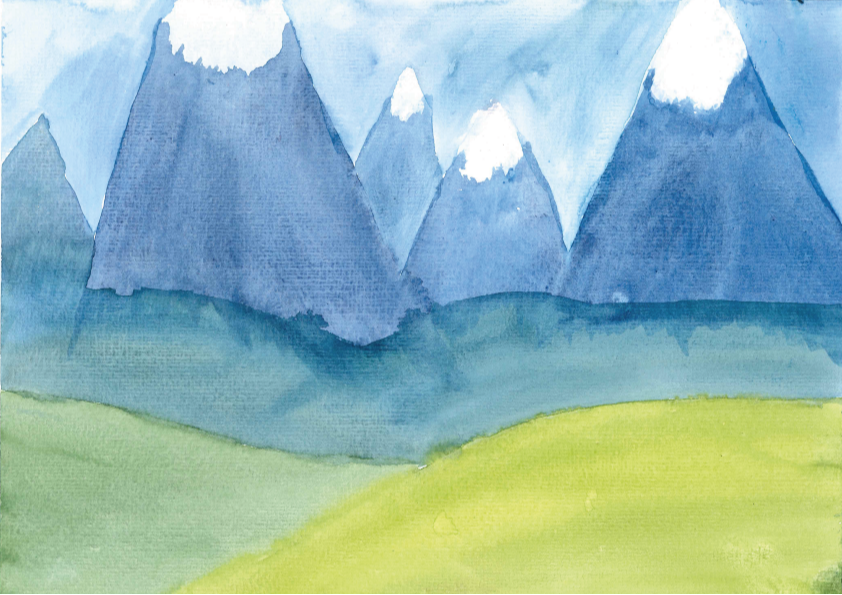Primary School
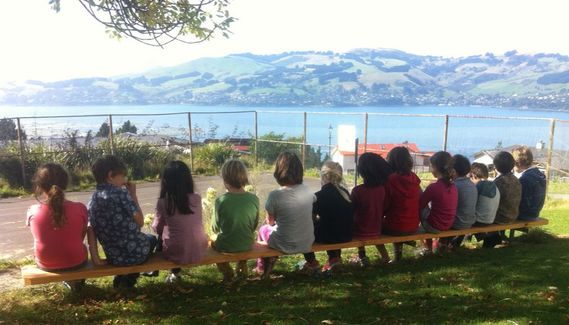
The Steiner curriculum is comprehensive - education of the head, heart and hands. A broad range of subjects are studied throughout the school. Care is taken to develop subject content in a way that is relevant to the inner life of the child.
The arts are integrated into the entire academic curriculum including mathematics and sciences. The Steiner method of education through the arts awakens imaginative and creative powers in children, bringing vitality and wholeness to their learning. The curriculum includes movement, Te Reo, handwork (knitting, stitch work, sewing), painting, modelling of wax or clay, music (recorder playing, singing and a stringed instrument programme from around Class 3.
An artistic approach to each aspect of the curriculum permeates the teaching and works directly with the feeling-imagination. Each lesson could be likened to looking through a window into a world, the teacher describes the view, pointing out salient features, and inspiring the child to enter into an enriched experience through which specific learning objectives then can be achieved.
The arts are integrated into the entire academic curriculum including mathematics and sciences. The Steiner method of education through the arts awakens imaginative and creative powers in children, bringing vitality and wholeness to their learning. The curriculum includes movement, Te Reo, handwork (knitting, stitch work, sewing), painting, modelling of wax or clay, music (recorder playing, singing and a stringed instrument programme from around Class 3.
An artistic approach to each aspect of the curriculum permeates the teaching and works directly with the feeling-imagination. Each lesson could be likened to looking through a window into a world, the teacher describes the view, pointing out salient features, and inspiring the child to enter into an enriched experience through which specific learning objectives then can be achieved.
An overview of the classes
Class 1 - "I am"
Ideally, the child will have their seventh birthday before 31st December of their Class One year. Years of experience show that boys benefit from being a little older ‑ the ideal for them is turning seven around the middle of the year. The developmental aspect may be referred to as 'Dreaming and Earthing'. Not yet fully aware of themselves as separate individualities, or that others are separate and unique individuals, the child relates to the world as it affects them. Their immediate response will come from their own sense of comfort or discomfort - ease or unease. The seven‑year‑old wishes to know that the word is beautiful, that the adults know what is right and good and will look after their needs. Children of this age can love easily and will wish to please those they love.
The task: Learning to become social, to 'do' with others, to experience themselves as part of a group, to take turns and to respect others’ needs and abilities. To look into their immediate environment and, through imaginative pictures, begin to develop a respect for, and understanding of, the world of nature. Through the imagination to make a feeling connection with the more abstract concepts that accompany our daily lives – beginning with writing, early reading skills and number recognition and computation. Fairy Tales are pre‑earth history, human psychology, human development and a bridge between heaven and earth. All lessons are linked with these stories and the children are encouraged to live and learn imaginatively. Story Curriculum: Fairy Tales Main Lessons: Form drawing Speaking, Writing, Reading Mathematics Home Surroundings Festivals Other Lessons: Visual Art - Drawing, Painting, and Crafts Music - Singing, Recorders, Rhythm making Drama - Puppets, Plays Movement - Ring Games, Skipping, Ball Skills, Balance Handwork - Finger Knitting, Knitting Māori - Waiata, Te Reo |
Class 2 - “I Am – You Are”
|
The children will be turning eight years old during this year. Their development is moving towards self identity and encompasses a growing awareness of others as different identities with their own needs and abilities. The world as it affects them is still the basis of the children’s primary social response. The eight year olds are now in the final stages of imitation; they will still be influenced by others actions however and adults must continue to be worthy role‑models and to set the standards for all social interactions. The will is still predominant and the healthy eight‑year‑old will wish to act out all experiences. The children wish to please those they love and to know the world as a good and beautiful piece and they implicitly trust that adults know what is right and good for them.
The task: To deepen awareness of their own needs and abilities and those of others. To integrate the children's movement between heaven and earth, to allow them opportunities to heighten their understanding of themselves and others and to inspire them to look towards, and experience a feeling for, their higher purpose. We must also continue to encourage the children's sense for the beauty of the world, and their reverence for all life. The first three school years have a similar character due to the nature of the child between the ages of six and nine. The contents of the first school year should be continued and deepened, encouraging the students to find their way into a living relationship with each subject. Story Curriculum: Fables, King of Ireland's Son & The Saints Main Lessons: Form drawing Speaking, Writing, Reading Mathematics Science Festivals Other Lessons: Visual Art - Drawing, Painting, and Crafts Music - Singing, Recorders, Rhythm making Drama - Puppets, Plays Movement - Ring Games, Skipping, Ball Skills, Balance Handwork – Knitting continues Māori - Waiata, Te Reo |
Class 3 - “I Am, Who Are You”?
|
The children will turn nine in this year, and the developmental stage known as the 'nine‑year‑old crisis' occurs around this time. The children find they are now 'on the earth', there is a perception of individuality and 'aloneness’, and they no longer experience themselves as one with the world. The children will question those things that previously went unquestioned: “Who are you to tell me?”, “What is my real name?”, “Am I adopted?” They will push boundaries, venture forth fearlessly when you wish they wouldn't and shrivel up fearfully where once they were confident. With the ninth year there comes an important stage in the development of the growing child, and this should be carefully watched and considered in teaching and education. It is the age when the child first really feels separate from the surroundings, which formerly were taken so much for granted. Self-consciousness becomes noticeably stronger and the soul‑life more inward and independent. All the child's powers of consciousness stir to life, and a wish to learn to know both teacher and world from a new angle. The nine‑year‑old wants to revere consciously what was formerly loved in a childlike way, but needs to feel that reverence is justified. This age makes great claims on the wisdom and tact of the teacher. The children need to be protected from a feeling of disappointment with themselves or the world, which they can so easily fall into at this age, especially in the presence of world‑weary or cynical adults.
The task: The Expulsion from Paradise mirrors the soul feeling of the nine-year-olds who now experience themselves as truly on the earth; heaven is lost to them and who will care for them? Just as Jehovah watched over and guided the Hebrews, so the adults around the children must reassure them that they know what is right and good and will show them the way. As the children now experience their bodies as 'the house of my soul', supporting lessons in the curriculum include 'House‑Building' which investigates the history and technology of house building and especially the different people, tasks and crafts involved in providing a home. 'Farming and Gardening' teaches the wonder and history of growing food and caring for the soil and the body. Finally, in 'People at Work' the children experience the many different ways in which we all support each other with our particular contribution to society. Story Curriculum: The Old Testament; Maori Creation Myths Main Lessons: Formdrawing Speaking, Writing, Reading Parts of Speech Reading Mathematics Practical Lessons - Farming, House Building, Festivals Other Lessons: Visual Art - Drawing, painting, crafts Music - Introduction of rounds, beginning violin, cello Movement Handwork - crochet Māori - Waiata, Te Reo |
Class 4 - “Who I Am, Where I Am”
|
The children turning ten experience a veiling of the connection with the spiritual world; they stand truly on the earth and are learning to walk in its ways. Experiencing themselves as separate from their surroundings, self‑consciousness becomes stronger and the soul life becomes more inward. There grows a soul‑wish to know and love the world consciously, yet this will be tested: is it justified that I revere this occurrence; that person; this phenomena? The children must be protected from becoming disappointed, or cynical about the world, as now the faint beginnings of consequential behaviour stir to consciousness: “If I do this, then that might happen.”
The task: To lead the students to discover themselves in time and place, and to an appreciation of the wonder of their world and how they arrived in it; to allow them an experience of consequences through story and to strengthen their social awareness. The Norse Myths are full of wonderful personalities and stories that children of this age can relate to. Of paramount importance is the figure of Loki, who grows from naive mischief-maker to bearer of conscious ill‑will and who eventually brings about the battle of Ragnarok, which marks the final departure of the Gods from the immediate sphere of human‑kind. Other lessons which support this year’s soul-wish to know themselves in time and place include 'The Magic of Numbers' which allows the children to experience the wonder and mystery of number puzzles and games; 'Local Geography' and "Local History' places them in time and space and gives a background to this. ‘Fractions’ in Maths and 'The Tenses' in English grammar allow them to investigate further their contribution in time and space. Story Curriculum: Norse Myths; The Volsung Saga Main Lessons: Form drawing English Mathematics Local Geography, Local History History of Writing, Human and Animal Festivals Other Lessons: Art - Drawing, painting and crafts Music - Rounds continued, second year strings Drama - Individual speaking parts begin to develop Eurythmy - Alliteration; Crossings; Walls of Asgard Handwork - Cross-stitch Woodwork Māori - Te Reo; Waiata |
Class 5 - ”Where I Stand In The World”
|
Children turning eleven years old can feel more at ease within themselves; the heart and lung ratio of 4:1 is attained and the keen observer can see that, for the normally developing child, the point of balance, the 'crown of childhood' is achieved. The students need to be led to a deeper picture of the world they live, in and an experience of the 'balance’ of the world.
The task: To help the children attain the balance of body and soul that can come at this time as they stand strongly within themselves. To encourage movement that demands strong form and rhythm and allows the students to experience full control over their bodies and allows individuals to experience a sense of control and balance inwardly. In searching for this sense of balance, the student can experience that the world has many facets, many points where the microcosm and macrocosm meet. Without labouring the point, they will be led again and again to the experience of causality where the soul may experience an awakening to its role in the social life. Having explored their immediate environment, we move them further back in time to study the ancient civilisations that contributed to the modern world. The students journey from myth and legend to recorded history. Ancient India is studied through The Ramayana or Bhagavad‑Gita; the life of Buddha may also be studied at this time; the stories of Gilgamesh and Eabani and Zarathustra may be told in brief before moving on through Ancient Egypt to Greece. The philosophers, poets and orators are met and often the story of Odysseus is told. The Greek epoch marks a time in the world's evolution when human‑kind lived in balance between materialism and spirituality, the motto inscribed on the temple of Delphi 'As within, so without’ reflects the ideal state of being for the Class Five student. Story Curriculum: Selected stories from Ancient Civilisations. Main Lessons: History English Mathematics Geography Human and Animal Botany Festivals Other Lessons: Form drawing - Celtic, Greek and Byzantine influenced patterns Art - Drawing, Painting, Crafts Music - Read notation, part-singing, third year strings Drama - Solo parts, Handwork – knitting in the round Maori Woodwork – simple shapes using rasp |
Class 6 - “How I Stand In The World”
|
The children turning twelve have arrived at the age of 'consequences'. For the first time we can reason with them: “If you do this, then that will happen.” At this stage they can begin practising self‑control and begin to imagine into the outcomes of any deeds or behaviour. The students’ bodies are changing and, as these changes occur, they must work, albeit unconsciously, with them. They must learn how to live in their bodies in a new way. The movements of these twelve-year‑olds begin to lose the natural rhythm and grace of the younger child; the point of balance, attained over the preceding year, appears to be lost They become 'unskilled'; their growing bodies seem to be no longer in their control and can become awkward and clumsy. Just as they must learn to move in a new way, adjusting to the body's new relationship to gravity, so the soul must also adjust to its changing abode. More than ever at this point in their development the young people must be given imaginative pictures and stories that speak to the higher aspects of their beings, they must be inspired and they must be protected from feelings of hopelessness or inadequacy. It is at this stage, when the soul connects itself more closely with the mechanism of the bony system, that we introduce the children to new scientific subjects. In the Physics Main Lesson, through observation and experiment, the students will investigate the mechanical laws that govern life and in the Geology Main Lesson, they will investigate the 'bones’ of the earth.
The task: To follow world evolution and to allow the child to experience what it meant to be a citizen of Rome, at the height of its greatness. To be able to experience themselves as Romans: true, honest, fair and brave; to experience themselves as an honourable part of the community, holding the good of the state above all else. The founding of Rome, the expulsion of the last king and the founding of the Republic are studied through biographies of the great Romans who put the needs of the city-state before their own. The students can experience the Senate and the making of the laws and learn how our own systems of money, government and justice are descendants of this ancient time. Movement is especially important in this year and the opportunity to experience the movement of the Roman Army, marching to the breath and heartbeat, should not be over looked. Exercises from the original Olympic Games can also continue to be worked with. Life in the Middle Ages follows the story of Rome. Amidst the hardship of daily life ran their stories of valour and truth; the remembered link with the spirit pervaded the great romances of the time. Story Curriculum: Stories of Rome and Tales of Chivalry from the Middle Ages Main Lessons: History: Rome, Middle Ages English: Descriptive Writing Mathematics: Simple Interest; Algebra Geography: The Pacific Basin; Geology: The minerals of New Zealand Science: Physics Festivals Other Lessons: Art - Drawing, painting, crafts, mosaics Music - Part and response singing, recorders Drama - From a Main Lesson Handwork - Designing own animal pattern and making it Woodwork - Simple, functional designs made with awl and rasp Gardening - composting, mulching, identifying seasonal growth Maori |
Class 7 - "What I Will Carry Into The World"
|
Puberty arrives and 'the balance' is temporarily misplaced. With puberty, changes can occur quickly; the 'child' is less in evidence physically and though the adults may differ in opinion, the students turning thirteen no longer experience themselves as children. They again ask “Who are you to tell me this?” They may resent school and parental rules, would like to be independent, but do not yet have the ability to strike out on their own. They wish to experience a new and larger world and express this in requests to explore the night life of the city, to frequent those places where their contemporaries 'hang out'. They often demand to change schools at this time, expressing a wish to escape the safety of the known world and to step into something that is 'bigger and better.'
The task: To look beyond the immediate horizon and begin a voyage of discovery that mirrors the students' own development. To present threshold pictures of bravery and sacrifice in daring to go beyond the known and to reflect upon the consequence of this. The great voyages of the 11th, 12th and 13th centuries can be studied through biographies and the immense hardship of the journeys and the effect these explorers had on the worlds they discovered could be investigated. The arrival of the Renaissance, hard on the heels of this era, is in turn studied, especially the lives of Da Vinci, Michelangelo and Raphael. The pupils will try their hands at copying these great masters and experience the beauty of form and colour that was their particular gift to the world. Lessons that support this time include astronomy and its developmental history. The lives of the astronomers and their discoveries are charted, maths moves into algebra and 'cracking the code', lessons in how to find answers when not all the information is to hand. The English lesson 'Wish, Wonder, Surprise' encourages the pupils to look beyond their own desires and view the greater needs of the world. The last drama presentation of the Lower School is offered in this year, a major presentation that presents a threshold the entire class must cross. Story Curriculum: Biographies of Great Deeds Main Lessons: History - The Great Explorers; The Renaissance, The Reformation English - Creative writing; Wish, Wonder & Surprise Mathematics - Graphs; Algebra Astronomy - The Sky As We See It Geography - The Lands Explored Science: Physics - Chemistry; Mechanics Health and Nutrition - Growing Up Subject Lessons: Art - Drawing, Painting, Crafts, Perspective Music - Ensemble musical performances Handwork - Making dolls and dressing them Woodwork - Simple toys, using hand tools Gardening - Growing and tending flowers and vegetables Maori |
